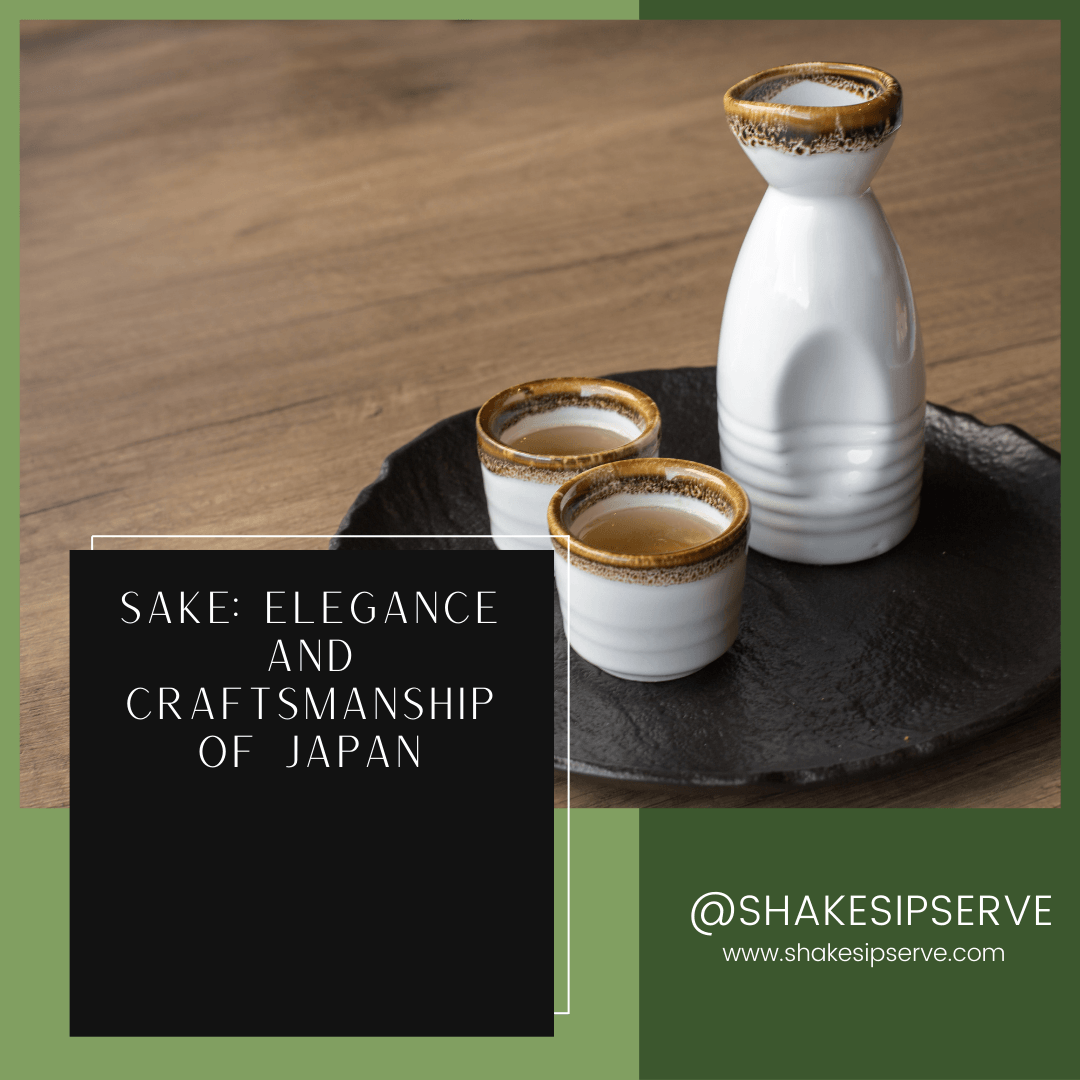Enter the serene world of sake, where centuries-old traditions and meticulous craftsmanship converge to create a beverage of unparalleled elegance and complexity.
Originating from Japan, sake holds a revered place in Japanese culture as a symbol of hospitality, celebration, and craftsmanship. Join us as we embark on a journey to uncover the rich history, intricate production process, and diverse expressions, inviting you to savor the essence of this beloved national beverage.
Origins and Cultural Significance
Sake, also known as “nihonshu” in Japan, has a history dating back over two thousand years, with its roots intertwined with the fabric of Japanese society. Originally brewed as an offering to the gods, sake gradually became an integral part of religious ceremonies, festivals, and social gatherings, serving as a conduit for communal bonding and celebration.
Historical Evolution
- Ancient Beginnings: The earliest forms of sake were crude and unrefined, made by chewing rice and spitting it into a communal pot to start fermentation.
- Refinement: By the Nara period (710-794), more sophisticated brewing techniques had emerged, and by the Heian period (794-1185), sake had become a vital part of court ceremonies.
- Edo Period: The Edo period (1603-1868) saw significant advancements in brewing technology and the establishment of sake breweries – known as “kura” – across Japan. This era laid the foundation for the diverse sake styles we enjoy today.
Sake in Modern Times
Today, sake continues to be a symbol of Japanese culture and hospitality. It is enjoyed both domestically and internationally, with an increasing number of sake breweries exporting their products worldwide. Festivals dedicated to sake, such as the Niigata Sake no Jin, celebrate its rich heritage and diverse flavors.

Production Process and Ingredients
Crafting sake is a labor-intensive process that requires precision, patience, and a deep understanding of the raw ingredients and brewing techniques. The primary ingredient in sake is rice, specifically a variety called “sakamai,” which is cultivated for its starch content and suitability for brewing.
Key Ingredients
- Rice (Sakamai): Specially cultivated for sake brewing, sakamai rice grains are larger and have a higher starch content than regular table rice.
- Water: High-quality water is crucial for sake production, influencing the fermentation process and the final flavor. Some regions, like Fushimi and Niigata, are renowned for their excellent water sources.
- Koji Mold: Aspergillus oryzae, or koji mold, is essential for converting the rice starches into fermentable sugars.
- Yeast: Different yeast strains are used to ferment the sugars into alcohol, each contributing unique flavors and aromas.
Brewing Process
- Rice Polishing: The rice grains are polished to remove the outer layers, exposing the starchy core. The degree of polishing, or seimaibuai, significantly impacts the sake’s flavor and classification.
- Washing and Soaking: The polished rice is carefully washed and soaked to achieve the desired moisture content.
- Steaming: The rice is steamed to make it suitable for fermentation.
- Koji Making: The steamed rice is mixed with koji mold and left to ferment, a crucial step that converts starches into sugars.
- Fermentation: The koji rice is mixed with additional steamed rice, water, and yeast in a process known as shikomi. This multi-stage fermentation process can last several weeks.
- Pressing: After fermentation, the mash is pressed to separate the liquid sake from the solid rice lees (called kasu).
- Filtration and Pasteurization: The sake is filtered and often pasteurized to stabilize it.
- Aging: Some sakes are aged for a period to develop deeper flavors.
Check out more :
- The History of Vodka: Explore the origins and evolution of this iconic spirit, from its earliest beginnings to its modern-day popularity.
- Vodka Production Process: Learn about the intricate process of distilling vodka, from selecting grains to bottling the final product.
- Understanding Vodka Labels: Decode the terminology and information found on vodka labels to make informed purchasing decisions.
- Popular Vodka Brands: Discover some of the most well-known vodka brands around the world and what sets them apart.
- Vodka Cocktails for Every Occasion: Explore a variety of cocktail recipes featuring vodka, from classic martinis to trendy concoctions.
- The Rise of Craft Vodka: Learn about the craft vodka movement and the artisanal distilleries producing unique and flavorful spirits.
- Vodka and Food Pairing Guide: Explore the world of vodka pairing with food, including recommended dishes and flavor combinations.
- Health Benefits and Risks of Vodka Consumption: Explore the potential health effects of moderate vodka consumption and the risks associated with excessive drinking.
- Vodka Myths Debunked: Separate fact from fiction as we debunk common myths and misconceptions about vodka.
- Vodka Tourism Destinations: Discover vodka-themed travel destinations around the world, from distillery tours to vodka tastings in iconic cities.
 Disclaimer: This post contains affiliate links. If you purchase through these links, I may earn a small commission at no additional cost to you.
Disclaimer: This post contains affiliate links. If you purchase through these links, I may earn a small commission at no additional cost to you.



